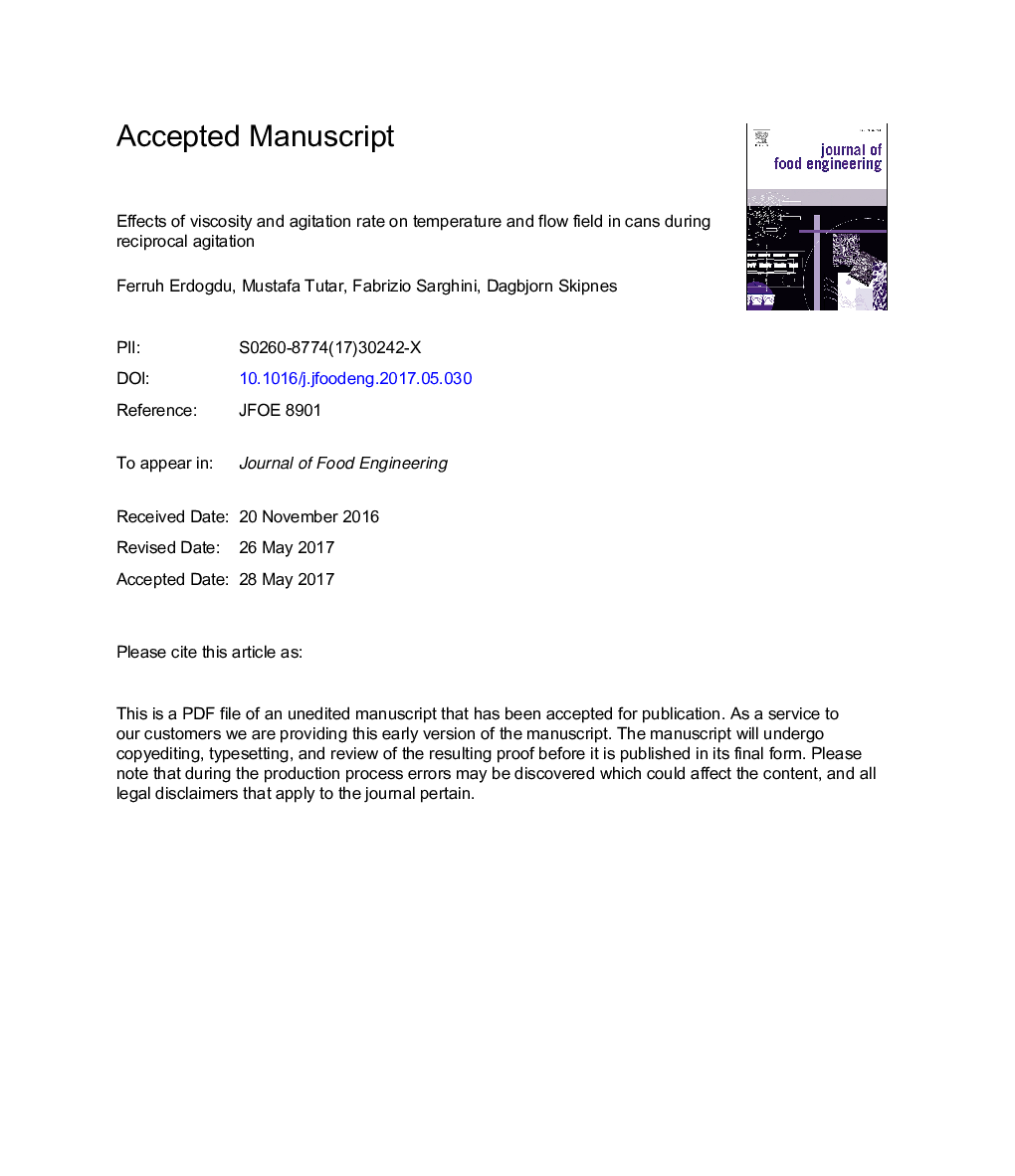| Article ID | Journal | Published Year | Pages | File Type |
|---|---|---|---|---|
| 4908920 | Journal of Food Engineering | 2017 | 44 Pages |
Abstract
A new canning process with a reciprocal agitation has been introduced recently. In this process, agitation with rapid back and forth motion of containers increases heat transfer rate by imposing additional external forces. In this process, balance between reciprocal agitation and buoyancy and viscous forces enable shorter process time leading to increased quality retention due to the considerable increase in temperature. Viscous forces are additional to affect this balance. Therefore, the objectives of this study were to determine the effect of viscosity on the evolution of temperature and flow field in a reciprocal agitation system and to determine the optimum agitation rates. For this purpose, an experimentally validated multi-phase model developed in a non-inertial reference frame of moving mesh was used. The simulations were carried out for a 98.2Â ÃÂ 115Â mm can containing distilled water (low viscosity Newtonian case) and high viscosity non-Newtonian liquids with 2% headspace at reciprocal agitation rates from 20 to 140Â rpm. An optimum agitation rate was calculated based on the change in Froude and Taylor numbers to compare agitation effects with gravitational and viscous effects. A significant effect of viscosity on temperature distribution was also presented. The results of this study might be used to optimize the process for improving retention of nutrients and health-promoting compounds of processed foods.
Keywords
Related Topics
Physical Sciences and Engineering
Chemical Engineering
Chemical Engineering (General)
Authors
Ferruh Erdogdu, Mustafa Tutar, Fabrizio Sarghini, Dagbjorn Skipnes,
